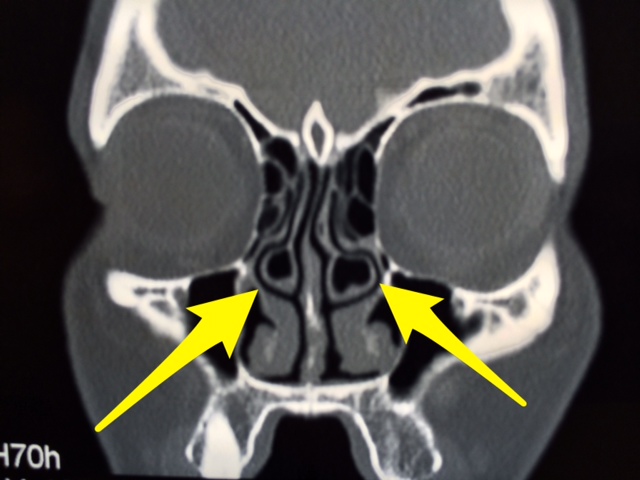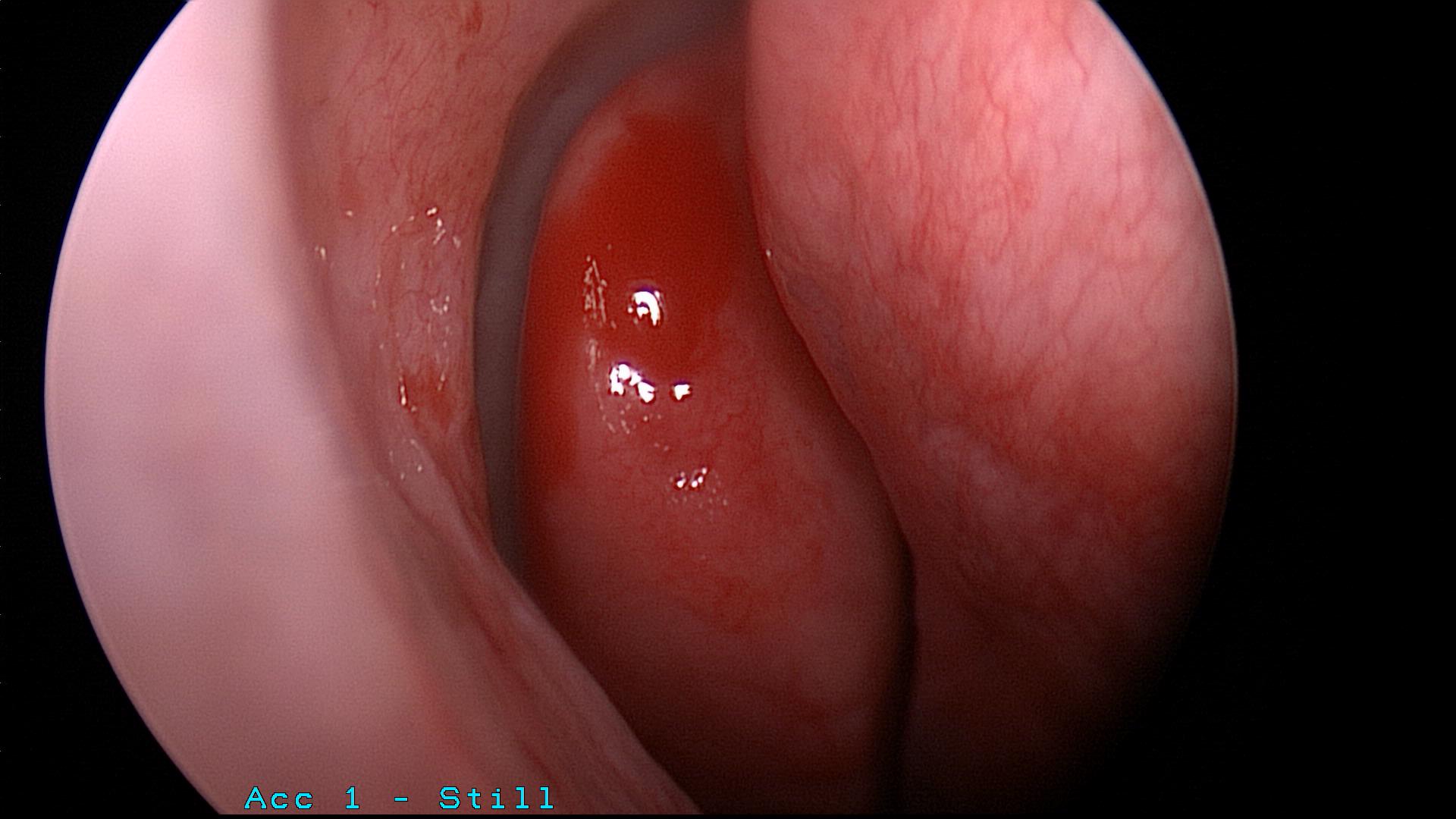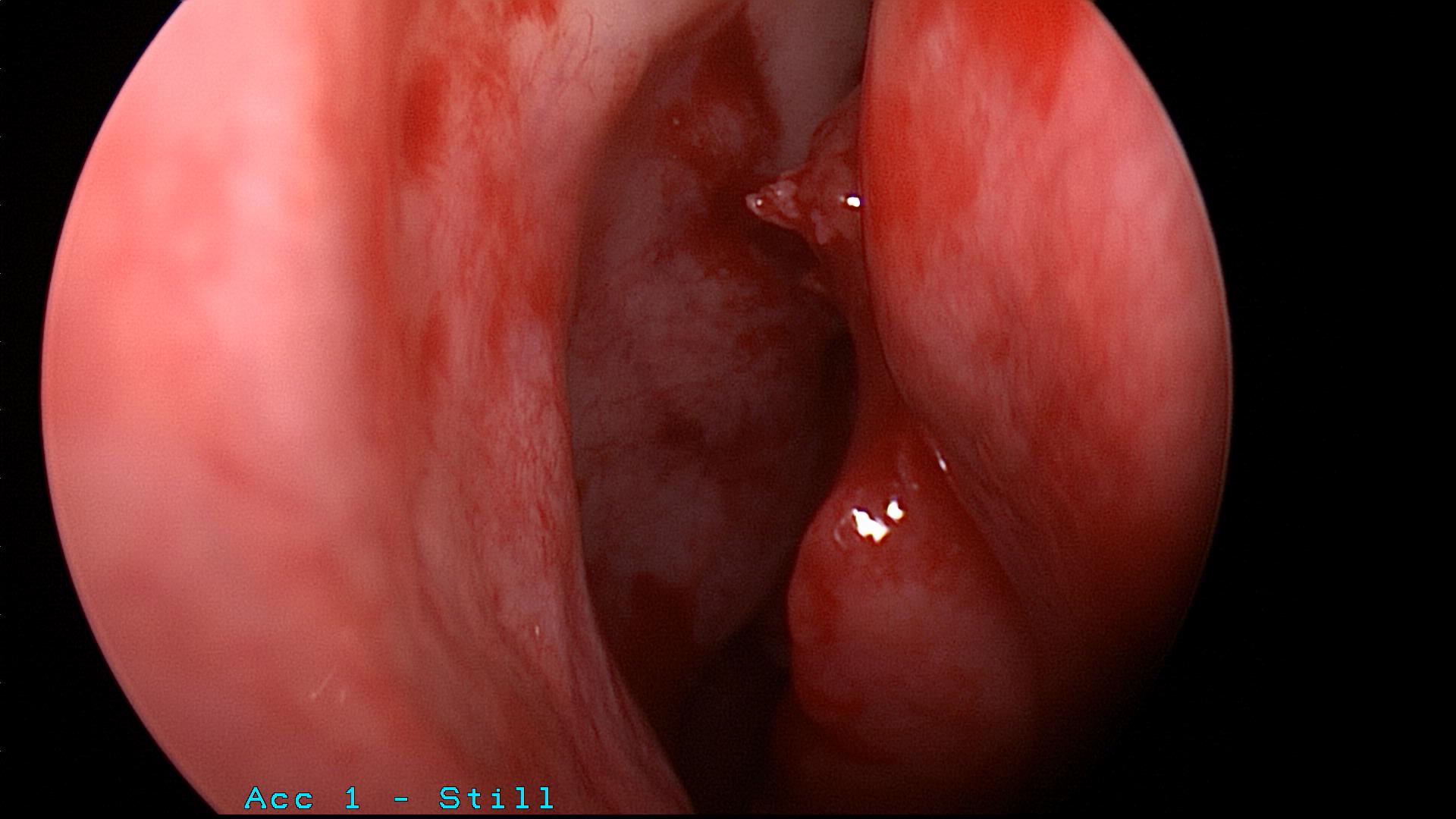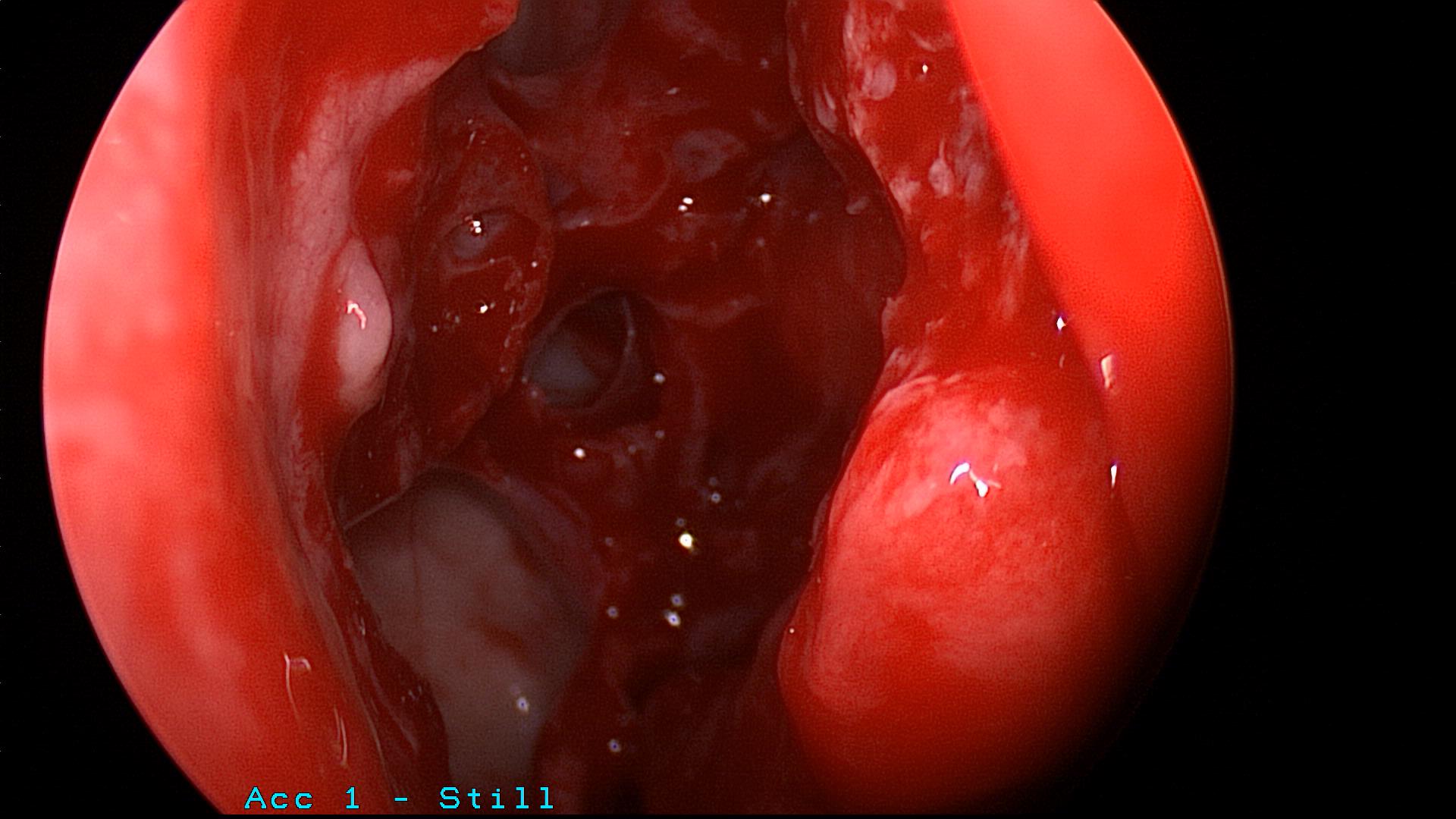What is a Concha Bullosa?
- Posted on: Jun 25 2014
There are many reasons people suffer from nasal obstruction. Some are due to membrane issues, such as allergies or any other process that makes the lining of the nose more swollen. Other reasons are more anatomical in nature. Perhaps the most common cause in this category is a deviated septum. The inferior turbinates are the side wall of the lower part of the nose, and they can also be bulky.
Another less-know reason for blockage of the nose and sinus drainage pathways is an anatomical variant named Concha Bullosa. This is a condition that affects the middle turbinates, which are the midportion of the side wall of the nose, where most of our sinuses drain. Typically, the middle turbinates have an inner core of thin, single-layered bone covered with the normal nasal membranes. Occasionally, as seen in this CT, that bone can get pneumatized (or “ventilated”), and results in a much bulkier structure. This will lead to blockage of our breathing passages as well as obstruction of our sinus drainage paths.
As seen in this endoscopic picture, a bulky middle turbinate, with a concha bullosa at its core, takes too much space in the nose and can lead to obstruction issues.
A concha bullosa is considered a surgical disease. Once the bone has pneumatized, and a bony air pocket is formed, there is no medical therapy that can reverse the process. Patients suffering with too many obstruction issues might need to contemplate corrective surgery. This usually involves removing the side wall of the concha bullosa, the side that faces the sinuses, in order to open up space. In the appropriate setting, this can be done in conjunction with endoscopic sinus surgery if otherwise needed. The photograph below shows how open the space is after the concha bullosa is opened. The photograph following that one shows additional sinus surgery being done.
Patients suffering from nasal obstruction or recurrent sinusitis are encouraged to see their Ear, Nose, and Throat specialist in order to investigate the cause. While a deviated septum and swollen inferior turbinates could be clinically diagnosed, a concha bullosa is usually diagnosed by a CT scan that documents the hollow core. As previously stated, the definitive treatment is by removing the side wall of the concha bullosa in order to make more space.
Tagged with: acute sinusitis, chronic sinusitis, concha bullosa, ear nose throat, endoscopic sinus surgery, endoscopic surgery, ENT, functional endoscopic sinus surgery, inferior turbinates, Isaac Namdar, Isaac Namdar MD, middle turbinate, nasal blockage, nasal congestion, nasal obstruction, New York, new york city, Otolaryngology, Otorhinolaryngology, sinusitis





